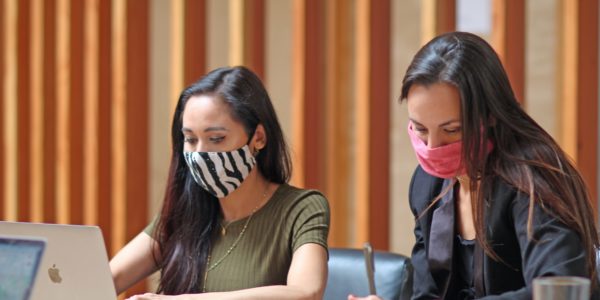#RealCollege During the Pandemic: Initial Institutional Responses To Address Basic Needs Insecurity
The novel coronavirus pandemic is testing institutions of higher education in unprecedented ways, including challenging their ability to address basic needs insecurity among their students. With the crisis ongoing as a new academic year begins, it is helpful to examine the response thus far. The Hope Center developed a pandemic-oriented, institution-based survey that was administered between April 9 and May 29. The survey yielded responses from 165 institutions in 36 states. The results reveal:

• The number of students with basic needs insecurity on college campuses is substantial, regardless of the method used to quantify such students.
• More than two-thirds of institutions said basic needs insecurity was discussed “a lot” or “a great deal” on their campuses, and community colleges were more likely than four-year institutions to view basic needs insecurity as a hinderance to degree completion.
• Nine of 10 respondents were looking for additional help to address students’ food and housing needs, which were already areas of concern prior to the pandemic. And as nationwide eviction moratoriums began to expire toward the end of summer, evidence emerged that housing needs were increasing.
• A majority of institutions offered support to students seeking Supplemental Nutrition Assistance Program (SNAP) benefits and had an active food pantry on campus.
• One hundred and seven institutions offered emergency aid. Three-quarters of those institutions used online applications for their emergency aid programs, easing one of the main challenges to effectively dispersing aid. However, institutions continued to struggle with staffing and publicizing the programs, as well as meeting the increased demand solely
via fundraising.
• One in five institutions required students to complete a Free Application for Federal Student Aid (FAFSA) in order to access emergency aid funds.
• Just three in 10 institutions helped students with basic needs insecurity apply for unemployment insurance, despite widespread job loss among undergraduates.
The Hope Center recommends three areas where institutions should focus their attention in the coming months:
- Continue getting to know your students. The #RealCollege survey, developed by the Hope Center, can help institutions assess the basic needs insecurity of students on their campuses and the breadth of resources available to serve their needs.
- Support your students with effective emergency aid programs as well as access to SNAP and unemployment insurance benefits. In light of growing financial pressures, identifying efficient and effective ways of offering these supports—or connecting students to existing options—is crucial.
- Advocate for policy changes that will help you support your students. There are tangible steps that institutions can take right now to align stakeholders in demonstrating the importance of basic needs supports to student success.


